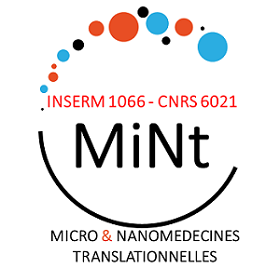NanoPULSE: An Innovative Microfluidics-Based Active Mixer for Lipid Nanoparticle Formulation
Résumé
Introduction The field of nanomedicine has been attracting experts from various disciplines, interested in conceiving nanocarriers capable of encapsulating potent drugs and nucleic acids to treat or prevent critical diseases. Lately, an increased need for highly-controlled synthesis of monodisperse organic nanoparticles (ONPs) for scaled-up production as well as laboratory research purposes has arised. Microfluidics succeededin overcoming the drawbacks of traditional nanoparticle synthesis techniques, notably size control and batch-to-batch repeatability, viaimproved precision-control over the ONPs’ self-assembly. Yet, despite theimprovements in performance, current micromixers struggle in meetingthe requirements for mass-scale production. Methods Here, we present a new and patented microfluidic-based activemicromixer prototype (NanoPULSE) to fulfill the urgent pharmaceuticalmanufacturing need. The device uses valves operating at highfrequencies and quick response times to sequentially inject aqueous andorganic phases into a T-junction, creating fringes that enhance thediffusion inside the mixing channel, irrespective from the total flowrate(TFR). NanoPULSE consists of a tool that ensures 1) constant ONPscharacteristics independently from the TFR, 2) permitting minimum-wastelow-volume synthesis, as well as 3) continuous, high-volume,aggregation-free production thanks to the pulsatile effect. A mathematicalmodel is derived to describe the TFR-independent mixing performance ofthe technology, based on the Taylor-Aris Dispersion equations.Lagrangian numerical simulations are performed to explore the transitoryeffect of the flow in the mixing channel, predict the mixing performance,and optimize the prototype. Results Preliminary DLS measurement results of synthetized liposomes andPLGA nanoparticles show constant diameters on average per formulationwith respect to the TFR, and low polydispersity indexes (PDI). Moreexperiments are ongoing to validate the possibility of controlling theONPs’ sizes via the valves’ injection frequencies. Conclusion In brief, NanoPULSE aims to overcome the limitations of current ONPsformulation processes by offering a uniform and reliable platform coveringvolumes that span from μL to L, in addition to utmost control of the ONPs’characteristics, aiming to establish itself as a new gold standard in ONPsformulation.
| Origine | Fichiers produits par l'(les) auteur(s) |
|---|
